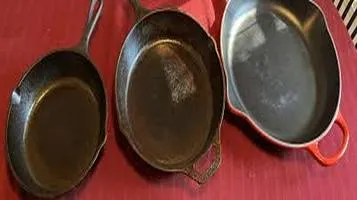Bone Meal: A Comprehensive Review
Bone meal is a nutrient-rich organic fertilizer made from finely ground animal bones, primarily sourced from cattle. It is an excellent source of phosphorus and calcium, essential nutrients that promote healthy root development and robust plant growth. Phosphorus in bone meal aids in the formation of flowers and fruits, making it particularly beneficial for flowering plants and root crops. Calcium is crucial for cell wall strength and overall plant structure. Bone meal is typically applied to the soil during planting, as it breaks down slowly, providing a steady release of nutrients over time. It is favored in organic gardening due to its natural composition and effectiveness. However, care should be taken to avoid overuse, as excessive phosphorus can harm the environment.

Bone meal, a nutrient-rich fertilizer derived from animal bones, has been a cornerstone in the realm of gardening and agriculture for decades. This organic amendment is prized for its high phosphorus content, which is essential for root development, flowering, and overall plant health. In this review, we'll delve into the composition, benefits, application methods, and potential drawbacks of bone meal, providing a well-rounded perspective for both novice and experienced gardeners.
Composition and Nutrient Profile
Bone meal primarily consists of ground-up animal bones, usually from cattle. It undergoes a steam sterilization process to eliminate pathogens, making it safe for use in gardens. The key nutrients in bone meal are phosphorus (P) and calcium (Ca), with typical N-P-K (Nitrogen-Phosphorus-Potassium) ratios being around 3-15-0, though this can vary depending on the source and processing method.
Phosphorus is critical for energy transfer and photosynthesis in plants. It plays a pivotal role in root growth, blooming, and fruiting. Calcium, on the other hand, contributes to cell wall integrity and helps in the absorption of other nutrients. This combination makes bone meal particularly effective for flowering plants, root vegetables, and bulbs.
Benefits of Bone Meal
1. Enhanced Root Development: Phosphorus is vital for the development of strong and healthy root systems. By improving root growth, bone meal helps plants absorb water and nutrients more efficiently, leading to robust growth.
2. Improved Flowering and Fruiting: Plants require phosphorus to produce flowers and fruits. Bone meal provides a steady supply of this nutrient, promoting more abundant and vibrant blooms, as well as better fruit set and development.
3. Soil Amendment: Bone meal can improve soil structure and fertility. It slowly releases nutrients over time, ensuring a long-lasting effect. This slow-release property reduces the risk of nutrient leaching and helps maintain soil health.
4. Organic and Sustainable: As an organic fertilizer, bone meal is a sustainable option for gardeners looking to minimize their environmental impact. It recycles animal by-products that would otherwise go to waste, contributing to a circular economy.
5. pH Neutral: Bone meal has a neutral pH, making it suitable for a wide range of soil types. It can be used without significantly altering the soil's pH balance, which is particularly beneficial for plants that are sensitive to pH changes.
Application Methods
Bone meal can be applied in various ways, depending on the specific needs of your garden:
1. Pre-Planting: Incorporate bone meal into the soil before planting. This method ensures that the nutrients are available to the plants from the start. For garden beds, a general recommendation is to apply 10 pounds of bone meal per 100 square feet of soil.
2. Side-Dressing: For established plants, bone meal can be applied as a side-dressing. Sprinkle it around the base of the plants and lightly work it into the soil. This method is particularly effective for perennials and shrubs.
3. Top-Dressing: Bone meal can also be used as a top-dressing for lawns. Spread it evenly over the grass and water thoroughly to help it penetrate the soil. This can promote healthy root growth and improve lawn resilience.
4. Composting: Adding bone meal to compost piles can boost the phosphorus content of the compost, resulting in a more balanced fertilizer. It also helps speed up the decomposition process by providing essential nutrients to the microorganisms involved.
Potential Drawbacks
While bone meal offers numerous benefits, it is not without its drawbacks:
1. Slow Release: The slow-release nature of bone meal means that it may not provide an immediate nutrient boost. This can be a disadvantage if plants require a quick fix, such as in cases of severe phosphorus deficiency.
2. Attraction of Animals: The smell of bone meal can attract dogs, raccoons, and other animals to the garden. This can lead to digging and disturbance of plants. To mitigate this, it is advisable to thoroughly mix bone meal into the soil and cover it with mulch.
3. Overuse Risks: Excessive application of bone meal can lead to phosphorus buildup in the soil, which can inhibit the uptake of other essential nutrients like iron and zinc. It is important to follow recommended application rates and conduct soil tests to avoid over-fertilization.
4. Limited Nitrogen: Bone meal is low in nitrogen, which is crucial for leafy growth. Gardeners may need to supplement with other fertilizers to ensure plants receive a balanced nutrient supply.
Conclusion
Bone meal is a valuable tool in the gardener's arsenal, offering a sustainable and organic way to boost phosphorus and calcium levels in the soil. Its benefits in promoting root development, flowering, and soil health make it a versatile and effective fertilizer. However, its slow-release nature and potential to attract animals necessitate careful application and consideration of complementary fertilizers. By understanding its properties and appropriate usage, gardeners can harness the full potential of bone meal to achieve thriving, healthy plants.






